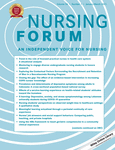Mentoring to engage diverse undergraduate nursing students in honors research
Abstract
Background
A diverse workforce is necessary to reflect our communities and impact the health disparities of our increasingly diverse populations. Students from ethnic minority and socioeconomically disadvantaged backgrounds face many challenges and barriers to their academic success. Faculty must try new ways of supporting the engagement of this student population to positively affect quality outcomes for the entire community.
Methods
High-performing students were recruited from undergraduate research courses to participate in a study to determine how honors research mentoring programs affect the engagement of undergraduate nursing students from ethnic minority and socioeconomically disadvantaged backgrounds.
Findings
Study participants who were mentored for 3 years had a retention rate of 98%, compared to a rate of 73% in the year before the start of the mentoring initiative with faculty. NCLEX (National Council Licensure Examination)-RN pass rates were 95% for those in the mentoring program, compared to 84% for those not mentored. Of the students completing the program and passing the NCLEX-RN, 100% are employed in the local community.
Conclusions
A competent and diverse nursing workforce is a priority for eliminating health disparities in rural and underserved communities. Supporting ethnic minority and socioeconomically disadvantaged students is valuable to bridging this gap and positively influencing our communities.
CONFLICT OF INTERESTS
The authors declare that there are no conflict of interests.




